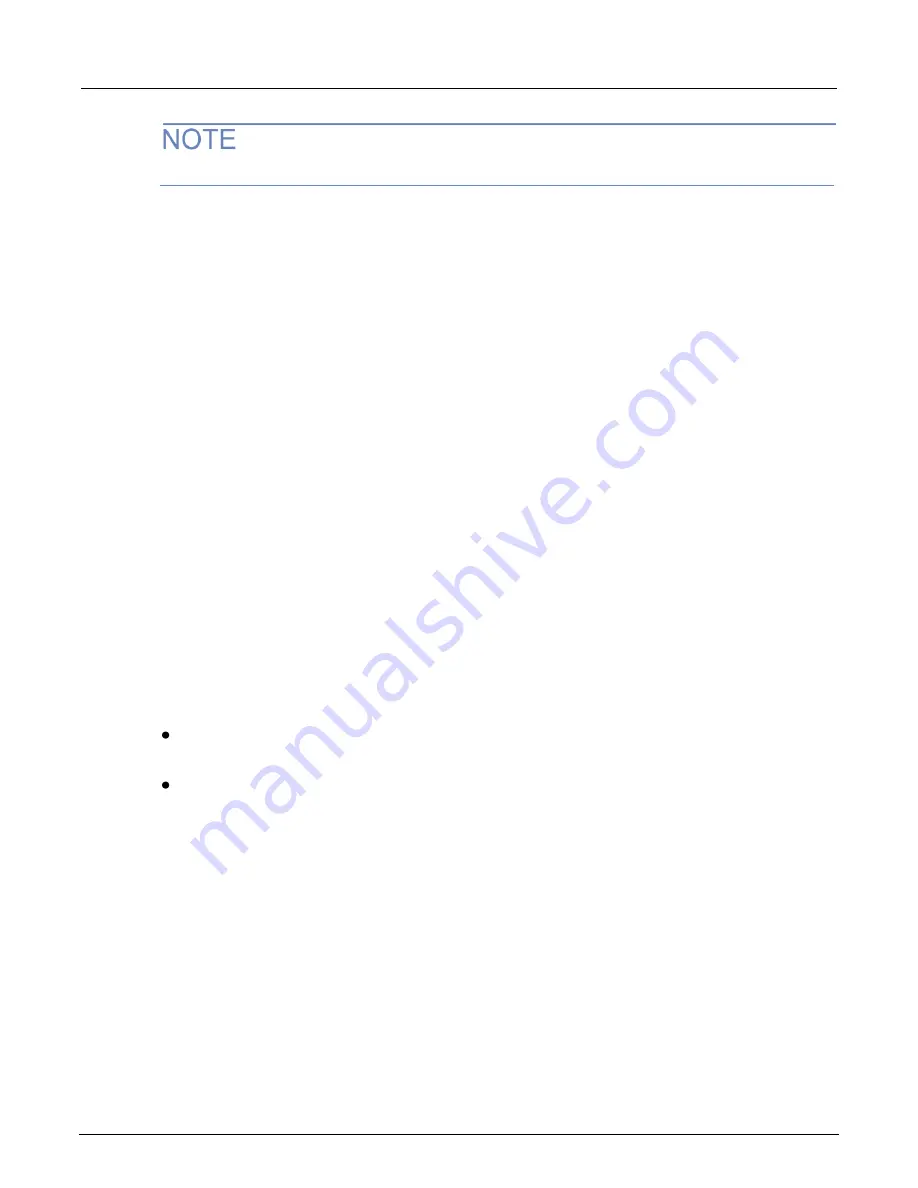
Section 4: Measurement optimization
Model 2281S-20-6 DC Power Supply and Battery Simulator Reference Manual
4-8
077114601 / March 2019
This feature is not available for the battery test and battery simulation functions.
If you create test algorithms and you are using the averaging filters, make sure the algorithms clear
the filter memory stacks at appropriate times to avoid averaging an inappropriate set of
measurements.
Moving average filter
When the moving average filter is selected, the measurements are added to the stack continuously
on a first-in, first-out basis. As each measurement is made, the oldest measurement is removed from
the stack. A new averaged sample is produced using the new measurement and the data that is now
in the stack.
Note that when the moving average filter is first selected, the stack is empty. When the first
measurement is made, it is copied into all the stack locations to fill the stack. A true average is not
produced until the stack is filled with new measurements.
For example, if the filter size is four, the first measurement is copied to all four-stack locations.
Therefore, (Re Re Re Reading1)/4. The display and remote interface
update after first reading. With each additional measurement, the average updates:
(Re Re Re Reading1)/4
(Re Re Re Reading1)/4
(Re Re Re Reading1)/4
Details on digital filter characteristics are provided in the following paragraphs.
Filter count:
The filter count specifies the number of measurements to be made for each
averaged measurement sample. It can be set from 2 to 100.
Filter window:
The digital filter uses a window to control filter threshold. When the reading value
remains within the selected window, the measurements continue to be placed in the stack. If the
reading changes to a value outside the window, the filter resets and starts processing again with
a new initial measurement.
The filter window, which is expressed as a percentage of range, allows a faster response time to large
signal step changes. A reading conversion outside the plus or minus window fills the filter stack
immediately.
If the reading value does not exceed the selected window, the reading is based on the average of the
reading conversions. If the reading value does exceed the selected window, the reading is a single
reading conversion and new averaging starts from this point.
















































